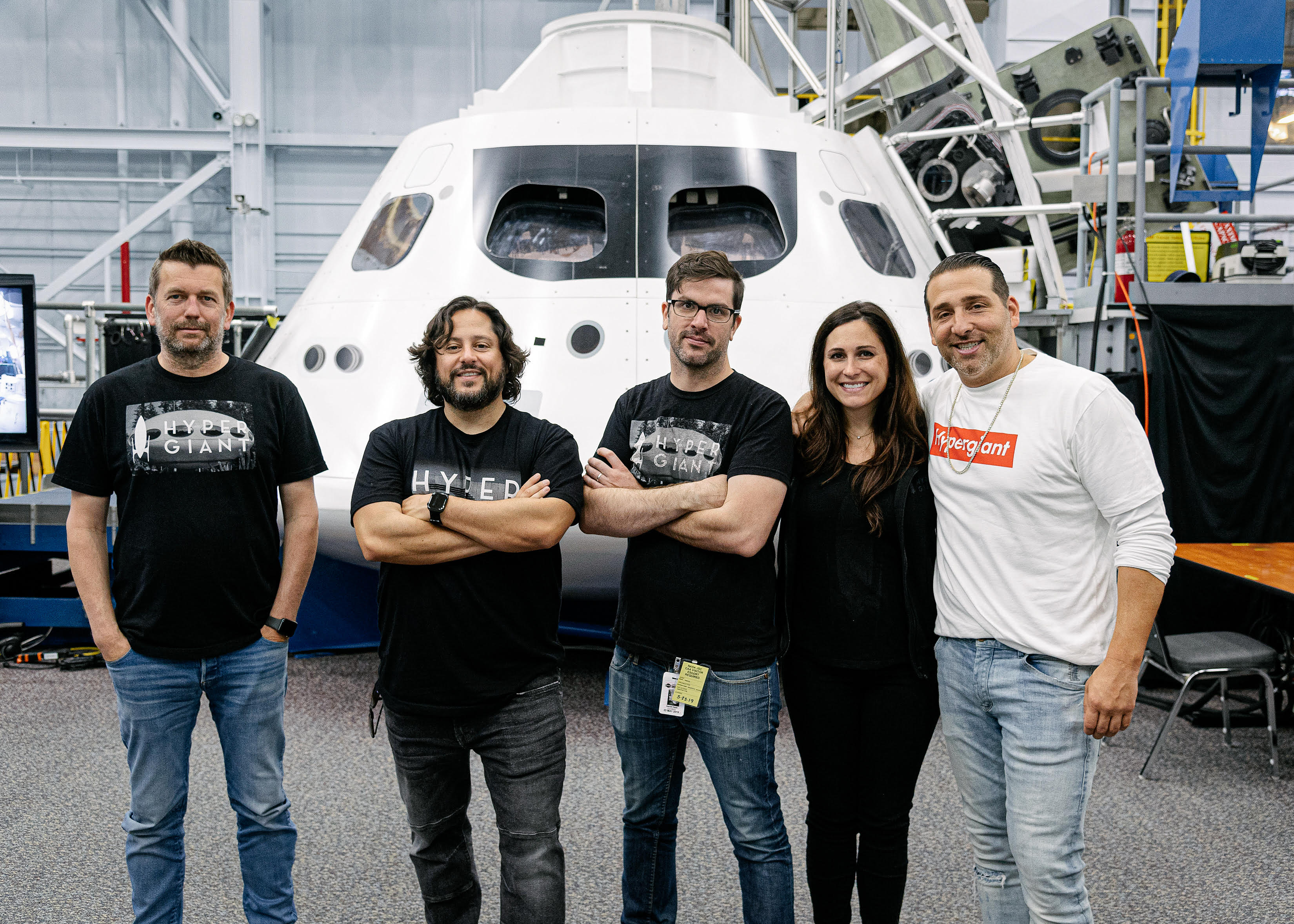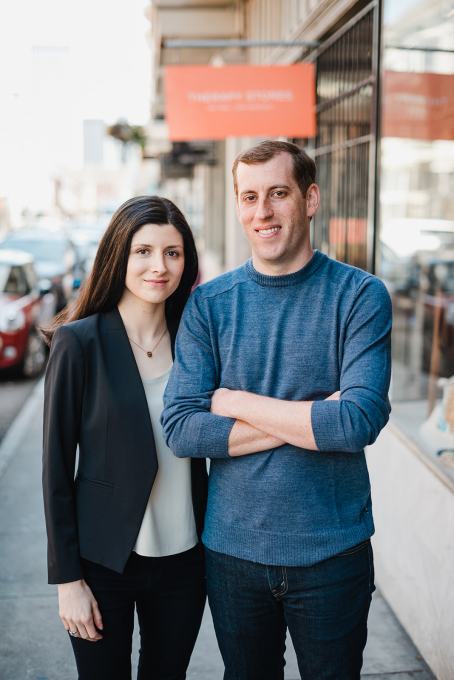Startups
Auto Added by WPeMatico
Auto Added by WPeMatico
Big money continues to flow in India’s growing education market. Bangalore-based Unacademy, which operates an online learning platform to help millions prepare for competitive exams in India, has raised $50 million to further scale its reach.
The Series D financing round was led by Steadview Capital, Sequoia India, Nexus Venture Partners and Blume Ventures, with Unacademy’s own co-founders Gaurav Munjal and Roman Saini also participating in it. The new round means the startup has raised close to $90 million to date.
The four-year-old startup is aimed at students who are preparing for competitive exams to get into a college and those who are pursuing graduation-level courses. Unacademy allows students to watch live classes from educators and later engage in sessions to review topics in more detail. It has 10,000 registered educators and 13 million learners — up from 3 million a year ago.
The startup said it will use the new fund to expand the number of educators it has on the platform, and also add more exam courses, Unacademy CEO Munjal told TechCrunch. It will also improve its product and expand the team.
Unacademy began its journey as a YouTube channel, but has since expanded to its own app where it offers some courses for free and others through a recently launched subscription business. The subscription service — called Unacademy Plus Subscription — has 50,000 users.
Unacademy also maintains an archive of all the classes, giving students the option to reference older lectures at any time through the app. The startup says YouTube is still its largest distribution channel. Overall, the platform sees more than 100 million monthly views across the platforms.
“We are seeing unprecedented growth and engagement from learners in smaller towns and cities, and are also very humbled to see that top-quality educators are choosing Unacademy as their primary platform to reach out to students. In the last few months, we have taken bigger strides toward achieving this mission. We have more than 400 top educators from across the country taking live classes every day on Unacademy Plus. This is available to every student, irrespective of their location,” said Munjal.
Unacademy competes with unicorn Byju’s, which is widely believed to be the largest edtech startup in the world with its valuation nearing $4 billion. Byju’s, which has more than 2.4 million paid subscribers (and over 30 million users), offers courses for students in kindergarten to year 12, in addition to those preparing for competitive under graduation level courses.
India has the largest population in the world in the age bracket of 5 to 24 years. The education space in the nation is estimated to grow to $35 billion in the next six years.
In recent months, Unacademy has grown more aggressive with marketing. Last year it tied up with web-production house The Viral Fever to fund a show called “Kota Factory,” which revolves around the lives of students who are preparing to go to an engineering college. In the midst of it, Unacademy also offered low-cost, discounted subscription plans to attract users to its subscription platform.
Unacademy has presence in Indonesia as well, where as of last year, it had about 30 educators. The startup did not offer an update on how its international ambitions are holding up. A representative of Unacademy told TechCrunch recently that the platform does not rely on ads for monetization.
Powered by WPeMatico
WeWork announced today that it will acquire Waltz, a building access and security management startup, for an undisclosed amount. Waltz’s smartphone app and reader allows users to enter different properties with a single credential and will make it easier for WeWork’s enterprise clients, such as GE Healthcare and Microsoft, to manage their employees’ on-demand memberships to WeWork spaces.
WeWork’s announcement said “with deep expertise in mobile access and system integrations, Waltz has the most advanced and sophisticated products to provide that single credential to our members and to help us better connect them with our spaces.” Waltz was founded in 2015 by CEO Matt Kopel and has offices in New York and Montreal. After the acquisition, Waltz will be integrated into WeWork, but maintain its current customer base.
WeWork has been on an acquisition spree over the past year as it evolves from co-working spaces to a software-as-a-service provider. Companies it has bought include office management platforms Teem (for $100 million) and Managed by Q, as well as Euclid, a “spatial analytics platform” that allows companies to analyze the use of workspaces by their employees and participation at meetings and other events.
Likewise, Waltz isn’t just an alternative to keys or access cards. Its cloud-based management portal gives companies data about who enters and exits their buildings and also allows teams to set “Door Groups,” which restricts the use of some spaces to certain people. According to Waltz’s help site, it can also be used to make revenue through ads displayed in its app.
Powered by WPeMatico
Iris Nova, the Coca-Cola-backed startup that creates Dirty Lemon beverages, is announcing plans to spend $100 million over the next three to five years to expand its offerings.
Founder and CEO Zak Normandin said the money will go towards launching new beverage brands developed internally at Iris Nova, as well as investing in beverages created by other companies, which will then distributed via the Iris Nova platform.
“This is the way for us to compete with the bigger beverage companies,” Normandin said.
He added that he’s open to working with both established companies and startups taking advantage of the shift away from “high calorie, high sugar beverages.” Either way, they’ll get access to the Iris Nova platform, which allows them to accept orders via text message, and to distribute their beverages next-day or same-day to every major U.S. market.
Normandin said that by linking the investment and the platform partnership, Iris Nova is forcing itself to be “highly selective” about which beverages will be part of the portfolio.
He also said the company won’t work with directly competing products — for example, he won’t partner with two different coconut water brands, but he would work with a coconut water brand and a sparkling water brand. In exchange, the brands have to commit to using Iris Nova as their only e-commerce platform, aside from Amazon.
Although Normandin brought up The Coca-Cola Company several times as a point of comparison (“I think that if Coke were to start today, it would do things exactly the way we are”), he also emphasized that he isn’t trying to turn Iris Nova itself into a consumer brand. There will be advantages for consumers who order across the Iris Nova portfolio — namely, they won’t have to reenter their payment and shipping information — but Normandin said, “I don’t think there will ever be an Iris Nova marketplace.”
The company said it will start adding new beverages to the platform on July 1. The goal, Normandin said, is to introduce 12 brands by the end of the year. He isn’t sure what the internal-external mix will be, but he said the company has already made two external investments, while also having a few beverage brands of its own ready to go, including the Tres Limón line of non-alcoholic apéritifs.
“What we think is that billion-dollar brands will not exist in the future,” he said. “I have no specific loyalty to Dirty Lemon as a brand. Our goal is to meet the needs of consumers right now. Eventually, if it goes away, that’s fine — we’ll create new selections for that same consumer group.”
Powered by WPeMatico
Hustle up, hackathon fans. The TechCrunch Hackathon at Disrupt San Francisco 2019 on October 2-4 may be more than three months away, but it’s filling up fast. There’s no application deadline. Instead, we’re capping the number of participants at 800 — and we have approximately 100 spots left. Don’t get shunted to the waiting list. Apply to the Hackathon today.
It doesn’t cost anything to compete in the hackathon. You’ll get free Expo Only passes for days one and two, and then we’ll upgrade you to an Innovator pass for day three of Disrupt SF.
Here’s how it all works. The TC hackathon sponsors offer a variety of contests — real-world challenges that require working solutions. Each sponsored challenge comes with its own prizes, including cash money.
You can bring a team of 4-6 people, or you can come solo and we’ll help you find a team when you arrive. Teams will use a variety of APIs, data sets and other tools to design, create and submit a working product in approximately 24 hours.
You’ll need talent, focus and stamina to build something out of nothing under this kind of intense pressure. We’ll do our part to keep your blood sugar levels up with free food and drink — including plenty of Red Bull and coffee. Plus, one of our hackathon sponsors, Kinship, will be hosting a custom contest at the Hackathon to explore how data could enrich the lives of pets to help them live healthier and happier. With access to unique pet data, and a puppy lounge (!!!) with animal shelters for much needed puppy love, they are looking to engage with founders, developers, designers and anyone passionate about pet space to create a brighter future for pets around the world. Over the next few weeks, we’ll be announcing more sponsors, contests and prizes.
When the time runs out, all teams submit their work. The judges will review all completed projects — science-fair style — on day two. They’ll pick 10 finalists to step onto the Extra Crunch Stage and deliver a two-minute product pitch.
After the judges consult, the sponsors announce their winning teams and award their prizes. And then — drum roll please — TechCrunch announces its grand prize winner for the best overall hack. The grand prize? A cool, $10,000. You’ll find more details and the event agenda on the Hackathon website.
We have just about 100 hackathon seats left at Disrupt San Francisco 2019 on October 2-4. Don’t miss your chance to dazzle us with your mad coding skills, compete against some of the world’s best devs, solve a real-world problem and maybe even win some cool prizes. Fill out the Hackathon application now.
Is your company interested in sponsoring the Hackathon at Disrupt San Francisco 2019? Contact our sponsorship sales team by filling out this form.
Powered by WPeMatico
If you’re serious about starting and scaling your business in school, treat your time in school like an extended incubator. While you may experience high levels of academic stress, your “real world” financial stress and transition to adulthood are buffered.
The key advantage of starting your business in school is that you have the time to test different ideas and evaluate which idea generates traction without high stakes. You will also gain key subject matter and operational knowledge that you can carry throughout your career.
The challenge of starting a business in school is that it is not easy to devote adequate focused energy to the growth of that business. Student founders cannot attend to the needs of their business whenever they feel like it. It’s a 24/7, 365 job that needs to be managed on top of rigorous schoolwork.
When I started Terravive, I spent at least 4-5 hours throughout each day speaking with our partners and customers and solving problems. Sometimes you must leave class and drop everything to put out fires.
The key to surmounting this challenge is to understand why you want to start this business. If you just want the recognition of starting a business, then I would recommend a different line of work to get the recognition you’re seeking.

Image via Getty Images / creatarka
If you want to solve a problem that you see in the world and are willing to do anything and everything to realize your vision, then starting a business may be the right path. When you run into problems in the future or question why you’re making all these sacrifices, remember why you started.
Powered by WPeMatico
Gen Z doesn’t want to get drunk. Millennials are tired of the obligatory after-work drinks.
Haus, a new startup selling apéritifs online, has a solution for them. The company’s beverages have a lower alcohol content than standard hard liquors on the market, which means you can drink one, even a few, without getting wasted. Made from distilled grapes, fresh herbs and botanicals, its natural ingredients and A-plus branding are sure to appeal to the younger demographic.
Launching today with pre-seed backing from venture capital funds Combine, Haystack and Partners Resolute, customers can begin ordering Haus’ citrus & flower-flavored debut apéritif (15% ABV), priced at $70 apiece. The goal, co-founder Helena Price Hambrecht explains, is to be the first fully direct-to-consumer player in an industry dominated by digitally-novice incumbent alcohol brands and distributors.
Haus enters the market at an opportune time. VCs — more than ever — are funneling cash to innovative beverage projects. This year, Bev, a canned wine business, raised $7 million in seed funding from Founders Fund. Liquid Death, which sells canned water for the punk rock crowd, attracted nearly $2 million in funding from angel investors like Away co-founder Jen Rubio and Twitter co-founder Biz Stone. And More Labs, the company readying the launch of Liquid Focus, is backed with $8 million in VC funding, among others.
Haus is run by husband-and-wife duo Helena Price Hambrecht and Woody Hambrecht. The former has established herself in Silicon Valley, developing the brands of consumer-facing companies including the likes of Airbnb, Dropbox, Facebook, Fitbit and Instagram. Woody Hambrecht, for his part, has been a bona fide “booze guy” since a young age, making wine and managing 67 acres of wine grapes at the pair’s Sonoma County, Calif. ranch, where Haus is also headquartered.

Haus co-founders, husband-and-wife duo Helena Price Hambrecht (right) and Woody Hambrecht.
“We joke that it must have taken a Silicon Valley type to marry a wine & spirits guy because no one has done this before; it’s crazy,” Price Hambrecht tells TechCrunch. “I can make something that gets a shit load of users and press in my sleep and I married this wine & spirits guy who understands the compliance, fulfillment, legal and finance elements. The amount we can do together is insane.”
By “this,” she means launch a direct-to-consumer apéritif brand. It’s generally illegal to sell spirits online D2C aside from a small subset of liquors with lesser alcohol contents. Knowing this loophole, many restaurants across the U.S. have begun making cocktails using only this subset of liquors (thus avoiding the steep fees required to obtain a liquor license) but Price Hambrecht says no one has thought to create an online store for apéritifs for fear of going up against the old guard of the alcoholic beverage market.
Because Haus handles every part of the process, including a patent-pending production model, the old guard isn’t an issue, nor is scaling. Currently, Haus is making and bottling its beverages in a 3,000 square foot warehouse just North of the couple’s farm, with plans to purchase another 2,800 square foot warehouse as orders increase. Unlike wine or whiskey, which must age years before going to market, it only takes hours to make apéritifs, simplifying one of the more complex features of the wine & spirits business.
Later this year, Haus plans to raise additional seed capital to launch a subscription product in 2020, begin constructing brick-and-mortar apéritif shops for the millennial and Gen Z cohort and release a second and third product line. Ultimately, Haus wants not only to disrupt the liquor business but provide alternative beverages to young people looking for better options.
“I was going through my own dilemma of drinking,” Price Hambrecht said. “If you’re a person that is career-focused, you’re possibly drinking 4-plus nights per week. I love how it brings people together; it’s a foundation of society, but you’ve got all these downsides. I never want to be drunk, I never want to be hungover.”
“It’s a cultural problem that we are solving.”
Powered by WPeMatico
Hypergiant, a startup launched last year to address the execution gap in bringing applied AI and machine learning technologies to bear for large companies, has signed on a high-profile new advisor to help out with the new ‘Galactic Systems’ division of its services lineup.
Hypergiant founder CEO Ben Lamm also serves as an Advisory Council Member for The Planetary Society, the nonprofit dedicated to space science and exploration advocacy that’s led by Nye who acts as the Society’s CEO. Nye did some voiceover work for the video at the bottom of this post for Hypergiant through the connection, and then decided to come on in a more formal capacity as an official advisor working with the company. He’ll act as a member of Hypergiant’s Advisory Board.
Nye was specifically interested in helping Hypergiant to work on AI tech that touch on a couple of areas he’s most passionate about.
“Hypergiant has an ambitious mission to address some big problems using artificial intelligence systems,” Nye explained via email. “I’m looking forward to working with Hypergiant to develop artificially intelligent systems in two areas I care about a great deal: climate change and space exploration. We need to think big, and I’m very optimistic about what AI can do to make the world quite a bit better.”
Through its work, Hypergiant has an impact on projects in flight from high-profile customers including Apple, GE, Starbucks and the Department of Homeland Security to name just a few. Earlier this year, Austin-based Hypergiant announced it was launching a dedicated space division through the acquisition of Satellite & Extraterrestrial Operations & Procedures (SEOPS), a Texas company that offered deployment services for small satellites.

Hypergiant founder and CEO Ben Lamm along with members of the Hypergiant team at NASA. Credit: Hypergiant.
Nye’s role will focus on this division, advising on space, but also equally on advising clients as to climate change in order to ensure that Hypergiant can “make the most of AI systems to hep provide a high quality of life for people everywhere,” Nye wrote.
“Climate change is the biggest issue we face, and we need to get serious about new ways to fight it,” he explained in an email, noting that the potential impact his work with Hypergiant will have in this area specifically is a key reason he’s excited to undertake the new role.
A Better World from HYPERGIANT on Vimeo.
Powered by WPeMatico
David’s Bridal once owned 50% of the $36 billion wedding gown market before it filed for bankruptcy last year. Brides were growing sick of the lack of styles and sizes plus high prices at expensive brick & mortar shops. The industry was destined for disruption by software that would replace overhead costs and inflexibility with direct-to-consumer personalization.
That’s why I profiled a new custom wedding dress startup back in 2016 called Anomalie despite little funding or traction. The rise of Instagram meant every bride wanted to look unique on a budget, not pay $5000 for a cookie-cutter $200 dress that happened to be white. Anomalie was willing to embrace software to offer 4 billion design permutations and break the markup cartel by selling gowns starting at $1000.
2.5 years later, Anomalie has begun to prove that cheaper doesn’t have to look cheap and custom doesn’t have to cause a headache. 13% of US brides, 275,000 out of 2.1 million, created an Anomalie account in the last year. With David’s Bridal looking shaky and wedding dresses being a seven-times larger market than bedding and mattresses, investors eagerly proposed to Anomalie. Today the startup announces a $13.6 million Series A led by consumer product VC Goodwater Capital .

“I don’t think I’ll ever get tired of working with brides. Other companies would kill for this costumer. She’s so obsessed with every detail of her wedding dress. it’s just a perfect environment to collect data” says Anomalie co-founder and CEO Leslie Voorhees. “Long lead time, high margin, this industry that’s completely f*cked up — it’s the perfect place to start this mass customization engine beginning with the wedding dress” she tells me, hinting at the startup’s potential to customize other clothing too.
Anomalie is also flexing its tech muscle today with the launch of its new dress sketch visualizer. Choose between a few options on shape, cut, color, pattern, and fabric, and you’ll see an algorithmic sketch of your dream dress appear instantly. Anomalie then pairs you with a squad of its designers to finalize the details, ship swatches, and get you your gown with a 100% refund policy if it’s not right.
The startup’s nest egg will go towards hiring more engineers plus bringing more of production in-house to offer additional features like this. But Voorhees insists that “I don’t think we’ll ever completely automate away the stylists. Customer don’t care about AI or machine learning, but they want to trust us to pull the ideas out of their heads.”

Anomalie co-founder and CEO Leslie Voorhees
Anomalie was woven out of Voorhees’ frustrations picking her own wedding dress. She’d been managing factories and supply chains in Asia for Nike and Apple, and it made no sense why slapping “bridal” on a dress could make it up to ten-times more expensive.
Her investigation uncovered that most brands were outsourcing their manufacturing, so she did an end-run, contacted factories directly, and got her dress made custom for a fraction of the price. So many of her pals demanded help doing the same that the Harvard Business School grad soft-launched Anomalie with her husband Calley Means [Disclosure: who I know from college] in the summer of 2016.
The startup’s gowns now average $1,400. Growth has been swift since weddings are so photographed and shared, with Anomalie reaching an outstanding net promoter score of 91. A friend of mine recently bought her dess through the company and it looked stunning and one-of-a-kind without breaking the bank. And since they’re custom, Anomalie makes inclusivity and advantage by offering larger sizes absent elsewhere
Meanwhile, Anomalie’s incumbent competitors have struggled. Gap and J.Crew abandoned the wedding dress business in the last few years. David’s Bridal emerged from bankruptcy with its 300 retail stores still operating, but it’s slipped to 30 percent US market share. It’s now owned by lenders including Oaktree Capital Group, which is a bad omen given that firm was responsible for driving Toys”R”Us into liquidation instead of keeping it open. No other players have a sizable foot or well-known brand besides super high-end designer Vera Wang.

Anomalie capitalized on David’s troubles by poaching its head of bridal production Angela Ng, who now leads the startup’s Hong Kong team and relieves Voorhees of constant trips to China. It also hired former Sephora VP of digital Marcy Zelmar and former TrueCar VP of engineering Aaron Tavistock. Their goal is to sell more dresses to get Anomalie more data, more factory modularization, and more control over its manufacturing.

Anomalie’s dress visualizer turns a few style selections into a sketch of your potential gown
The new funding round that builds on its $4.5 million seed round was joined by Signia, SoGal Ventures, Lerer Hippeau’s BN Capital Fund, and Fin’s Sam Lessin also includes strategic angels like former Stitch Fix CTO Jeff Barrett and ThirdLove underwear CEO Heidi Zak. At Anomalie’s San Francisco headquarters, mannequins sporting design prototypes stand beside software teams optimizing the new dress visualizer. And when I say the dresses are custom, I mean they can get about as weird as you want. Anomalie is finishing up a dress with lyrics from the couple’s favorite song embroidered in a secret language from their favorite TV show…and it still looks beautiful.
“One of the coolest things about Anomalie is that they’re not just using digital as a distribution strategy, but to also deliver a differentiated product experience” says Goodwater partner Eric Kim. “Anomalie’s sketch-builder is a great expression of this emphasis on product and customer centricity.” Wedding dresses have been largely ignored by startups despite the market being bigger than luggage ($34 billion), or shaving ($21 billion), oral care ($10 billion) and hair loss ($4 billion) combined.
The challenge is that unlike those products, bridal gowns are “a zero failure game. This is like airplane engines and heart rate monitors” Voorhees stresses. Anomalie must maintain perfect quality, times, and customer experience to avoid ruining someone’s big day. “Never messing up a dress or losing a dress — we take this really, really seriously.” She knows a few viral disasters could sink the ship. It also has to stay ahead of fresh entrants like COUTURME, a new Y Combinator startup making custom evening gowns as well as wedding dresses.

Anomalie’s SF headquarters. Photo by Summer Wilson
Anomalie sees global demand for a better experience, and thinks it can apply its data set to wedding dresses for more cultures as well as additional types of clothing. “We are building up a large repository of female measurements and creating tech plus operational processes around ‘mass customization’ that can be applied to other garments” Voorhees reveals. “Our aspirations are around bringing more body inclusivity + customization to women’s fashion, not just bridal.”
And while Anomalie could always find a retail partner to get more exposure, it’s tough for brick & mortar brands to operate online without cannibalizing their sales. “We think the women’s closet of the future contains staples from Stitch Fix, rotating dresses from Rent the Runway, and signature custom garments from Anomalie.”
The Anomalie just needs to educate brides that they can actually have the dress of their dreams, and now it wants to inspire that dream on-site too. Full of ambition and verve, Voorhees concludes, “What’s Pinterest valued at when it’s basically a wedding dress search engine?”

Powered by WPeMatico
Welcome to this week’s transcribed edition of This is Your Life in Silicon Valley. We’re running an experiment for Extra Crunch members that puts This is Your Life in Silicon Valley in words – so you can read from wherever you are.
This is Your Life in Silicon Valley was originally started by Sunil Rajaraman and Jascha Kaykas-Wolff in 2018. Rajaraman is a serial entrepreneur and writer (Co-Founded Scripted.com, and is currently an EIR at Foundation Capital), Kaykas-Wolff is the current CMO at Mozilla and ran marketing at BitTorrent. Rajaraman and Kaykas-Wolff started the podcast after a series of blog posts that Sunil wrote for The Bold Italic went viral.
The goal of the podcast is to cover issues at the intersection of technology and culture – sharing a different perspective of life in the Bay Area. Their guests include entrepreneurs like Sam Lessin, journalists like Kara Swisher and politicians like Mayor Libby Schaaf and local business owners like David White of Flour + Water.
This week’s edition of This is Your Life in Silicon Valley features Tim Kendall, the former President of Pinterest and current CEO of Moment. Tim ran monetization at Facebook, and has very strong opinions on smartphone addiction and what it is doing to all of us. Tim is an architect of much of the modern social media monetization machinery, so you definitely do not want to miss his perspective on this important subject.
For access to the full transcription, become a member of Extra Crunch. Learn more and try it for free.
Sunil Rajaraman: Welcome to season three of This is Your Life in Silicon Valley. A Podcast about the Bay Area, technology, and culture. I’m your host, Sunil Rajaraman and I’m joined by my cohost, Jascha Kaykas-Wolff.
Jascha Kaykas-Wolff: Are you recording?
Rajaraman: I’m recording.
Kaykas-Wolff: I’m almost done. My phone’s been buzzing all afternoon and I just have to finish this text message.
Rajaraman: So you’re one of those people who can’t go five seconds without checking their phone.
Powered by WPeMatico
Tundra, a new zero-commission wholesale marketplace, has today announced the close of $12 million in Series A funding. The round was led by Redpoint’s Annie Kadavy, with participation from investors such as Initialized Capital, Peterson Ventures, FJ Labs, Switch Ventures and Background Capital.
Tundra was founded by married couple Arnold and Katie Engel who previously ran a global supply chain company called Vox Supply Chain. In that world, they quickly realized just how much inefficiency is built into the wholesale market, from disorganized trade shows to transaction fees from the incumbents to a business that’s largely done on phone with pen and paper.
That’s where Tundra comes in.
Tundra allows suppliers to list their products on the platform, which is built to look and feel like a B2C marketplace. Buyers can come on the platform and shop for products, complete with ratings and reviews, supplier performance metrics, and free shipping with easy tracking.
 “The wholesale market is set up to benefit big businesses, with other platforms and distributors charging anywhere from 5 percent to 30 percent commission,” said Engel. “That can be particularly pronounced for small businesses.”
“The wholesale market is set up to benefit big businesses, with other platforms and distributors charging anywhere from 5 percent to 30 percent commission,” said Engel. “That can be particularly pronounced for small businesses.”
Plus, it can be perilous for small players to depend on big platforms like Amazon. Just a few weeks ago, there were rumors that Amazon would focus its attention on big brands like P&G and purge smaller suppliers from the platforms. Amazon denied the rumors, saying it evaluates suppliers on an individual basis.
For Tundra, the hope is to eliminate both the time-consuming and tedious process of negotiating deals at trade shows as well as the cost of simply buying and selling wholesale products online. And, importantly, Tundra has a zero-fee model, which means that buyers and suppliers can operate on the platform without spending a penny if they so choose.
Of course, the company has to generate revenue in some way, which is why Tundra offers premium options at checkout, such as faster shipping, order insurance, and additional custom clearance and logistics services for international orders.
Having spent a year serving as Head of Strategic Operations growing Uber Freight, Redpoint Managing Director Annie Kadavy saw first-hand just how gargantuan the wholesale market is. During a phone interview, she reminded me that almost every item within view at any given moment was shipped on a truck and purchased at a wholesale price before it was purchased by a consumer in a store.
“Tundra’s greatest challenge ahead is execution, because the market opportunity here is very obvious,” said Kadavy. “It’s a huge business that is currently transacted by fax, phone call and pen and paper, so the opportunity is very clear.”
There is clearly movement in the space. Just last month, Shopify acquired Handshake to handle B2B e-commerce directly for customers. That followed its acquisition of dropshipping platform Oberlo in 2017, signaling the fact that existing platforms realize the opportunity of wholesale e-commerce, as well.
And a recent report stated that B2B e-commerce passed the $1 trillion mark for the first time in 2018.
The opportunity is there, as is the competition, but Tundra comes to the table armed with fresh capital.
Powered by WPeMatico